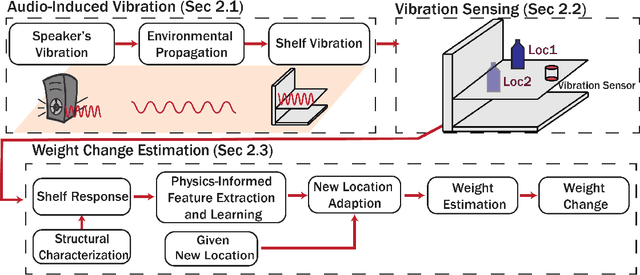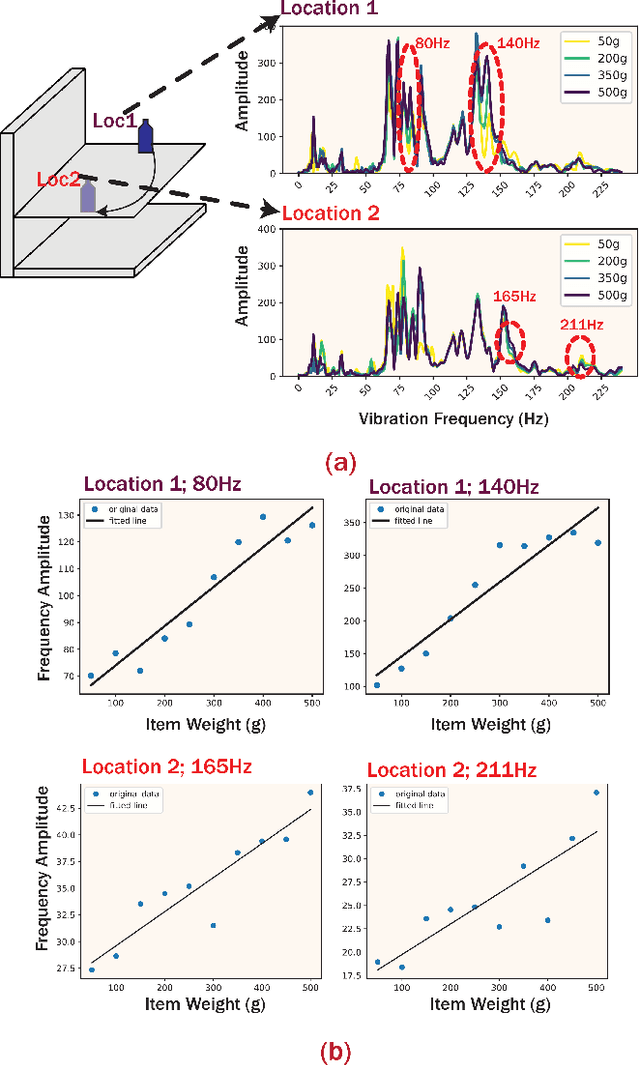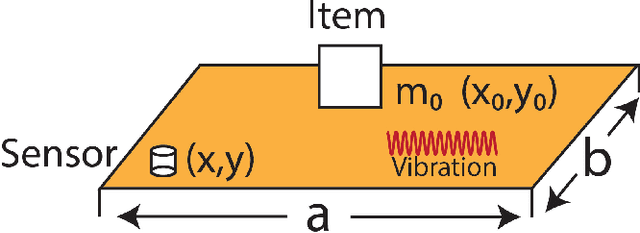Jesse R Codling
WeVibe: Weight Change Estimation Through Audio-Induced Shelf Vibrations In Autonomous Stores
Feb 17, 2025



Abstract:Weight change estimation is crucial in various applications, particularly for detecting pick-up and put-back actions when people interact with the shelf while shopping in autonomous stores. Moreover, accurate weight change estimation allows autonomous stores to automatically identify items being picked up or put back, ensuring precise cost estimation. However, the conventional approach of estimating weight changes requires specialized weight-sensing shelves, which are densely deployed weight scales, incurring intensive sensor consumption and high costs. Prior works explored the vibration-based weight sensing method, but they failed when the location of weight change varies. In response to these limitations, we made the following contributions: (1) We propose WeVibe, a first item weight change estimation system through active shelf vibration sensing. The main intuition of the system is that the weight placed on the shelf influences the dynamic vibration response of the shelf, thus altering the shelf vibration patterns. (2) We model a physics-informed relationship between the shelf vibration response and item weight across multiple locations on the shelf based on structural dynamics theory. This relationship is linear and allows easy training of a weight estimation model at a new location without heavy data collection. (3) We evaluate our system on a gondola shelf organized as the real-store settings. WeVibe achieved a mean absolute error down to 38.07g and a standard deviation of 31.2g with one sensor and 10% samples from three weight classes on estimating weight change from 0g to 450g, which can be leveraged for differentiating items with more than 100g differences.
PigV$^2$: Monitoring Pig Vital Signs through Ground Vibrations Induced by Heartbeat and Respiration
Dec 07, 2022



Abstract:Pig vital sign monitoring (e.g., estimating the heart rate (HR) and respiratory rate (RR)) is essential to understand the stress level of the sow and detect the onset of parturition. It helps to maximize peri-natal survival and improve animal well-being in swine production. The existing approach mainly relies on manual measurement, which is labor-intensive and only provides a few points of information. Other sensing modalities such as wearables and cameras are developed to enable more continuous measurement, but are still limited due to animal discomfort, data transfer, and storage challenges. In this paper, we introduce PigV$^2$, the first system to monitor pig heart rate and respiratory rate through ground vibrations. Our approach leverages the insight that both heartbeat and respiration generate ground vibrations when the sow is lying on the floor. We infer vital information by sensing and analyzing these vibrations. The main challenge in developing PigV$^2$ is the overlap of vital- and non-vital-related information in the vibration signals, including pig movements, pig postures, pig-to-sensor distances, and so on. To address this issue, we first characterize their effects, extract their current status, and then reduce their impact by adaptively interpolating vital rates over multiple sensors. PigV$^2$ is evaluated through a real-world deployment with 30 pigs. It has 3.4% and 8.3% average errors in monitoring the HR and RR of the sows, respectively.
 Add to Chrome
Add to Chrome Add to Firefox
Add to Firefox Add to Edge
Add to Edge